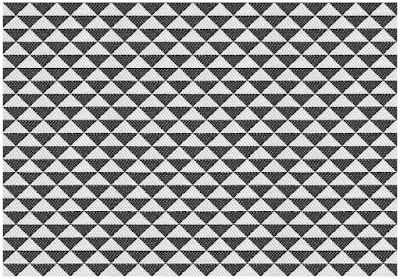Il Tribunale UE con la sentenza 3 dicembre 2019 T-658/18,Hästens Sängar AB, c. EUIPO, impartisce alcuni insegnamenti in materia di marchi di forma, anche se bidimensionali. E’ noto che nella disciplina dei marchi di forma ci rientrano anche quelli bidimensionali, come precisa il Tribunale stesso.
Il marchio chiesto in registrazione era quello qui sotto riprodotto e per le classi indicate al § 3 : arredi tessuti vestiti e simili (classi 20 24 25 35)

L’esaminatore e anche la Commissione di Appello (Board of Appeal, BoA) rigettano la domanda per mancanza di distintività ex articolo 7 comma 1 lettera B del regolamento 1001 del 2017 secondo cui <<Sono esclusi dalla registrazione: …; b) i marchi privi di carattere distintivo;>>
A parte altre due censure sulla motivazione , che qui non verranno considerate, il T. si sofferma su quella relativa alla violazione della regola sulla distintività
La Corte inizia ricordando alcuni principi noti e cioè che:
– è sufficiente un grado minimo di distintività, paragrafo 16;
-la distintività non ha nulla a che fare con la creatività, paragrafo 17
– marchi tridimensionali sono sottoposti alla stessa disciplina degli altri Marchi paragrafo 19.
Su quest’ultimo punto però il T. precisa che la percezione del consumatore medio non è necessariamente la stessa quando il marchio tridimensionale e consiste nell’ apparenza del prodotto stesso , § 20.
Infatt il consumatore medio non ha l’abitudine <<of making assumptions about the origin of products on the basis of their shape or the shape of their packaging in the absence of any graphic or word element, and it could therefore prove more difficult to establish distinctiveness in relation to such a three-dimensional mark than in relation to a word or figurative mark>>, § 21
Inoltre quanto più vicino la forma chiesta in registrazione ricorda la forma più usuale dei prodotti, tanto maggiore è il rischio che il marchio sia privo di ogni distintività, § 22. Infatti in tali casi <<only a mark which departs significantly from the norm or customs of the sector and thereby fulfils its essential function of indicating origin is not devoid of any distinctive character for the purposes of Article 7(1)(b) of Regulation 2017/1001>>, § 22.
Poi ricorda che la disciplina dei marchi bidimensionali si applica anche ai tridimensionali, § 23. Il che vale pure per il caso di un marchio figurativo che consiste in una parte della forma del prodotto che designa, poiché <<the relevant public will immediately and without further thought perceive it as a representation of a particularly interesting or attractive detail of the product in question, rather than as an indication of its commercial origin (judgment of 21 April 2015, Representation of a grey chequerboard pattern, T‑360/12, not published, EU:T:2015:214, paragraph 25)>> § 24 (la sentenza citata viene citata in moltri altri passi della sentenza).
Applicando queste regole al caso sub iudice, il T. trova che correttamente il BoA <<found that the mark applied for consisted of a representation of a fabric pattern, in other words the representation of the possible outward appearance of the goods covered by the application for registration, which are fabrics, are made from fabrics or have fabric surfaces>> § 33
Bisogna poi accertare se la domanda di marchio richiesto differisca significativamente dagli usi del settore, § 40.
E sul punto il BoA aveva deciso che <<the chequered pattern is a basic and commonplace style for fabric, since it is composed of a regular succession of squares of the same size which are differentiated by alternating different colours, in this case grey-blue and white. It deduced from this that the pattern did not contain any notable variation in relation to the conventional representation of a chequered design found everywhere in the field of textiles>>, § 41.
Il T. non ha motivo di censurare questa statuoizione, § 42
In fatti in primo luogo <<43. … the colours used in the pattern will be perceived by the relevant public as being used for aesthetic purposes or to display the goods and services in question and will not be sufficient, on their own, to distinguish the goods and services of the applicant from those of other undertakings (judgment of 19 September 2012, Fraas v OHIM (Tartan pattern in dark grey, light grey, black, beige, dark red and light red), T‑50/11, not published, EU:T:2012:442, paragraph 66)>>.
In secondo luogo <<44. … graphically, the representation of squares at issue does not contain any notable variation in relation to the conventional representation of such patterns and that, as a result, the relevant public will in fact only perceive a commonplace and everyday pattern (judgment of 19 September 2012, Tartan pattern in dark grey, light grey, black, beige, dark red and light red, T‑50/11, not published, EU:T:2012:442, paragraph 68)>>.
Di conseguenza, tenendo dei beni e servizi richiesti e il modo in cjui son percepiti dal pubblico rielvante, <<the mark applied for will not be understood and remembered as an indicator of the commercial origin of those goods and services>>., § 45

